This is the former cannibal mountain tribe who amputate the fingers of women to appease the dead and smoke ancestors daily to preserve their mummified bodies.
The indigenous Dani tribe live in the isolated Baliem Valley in West Papua, Indonesia, and were discovered by a Western scientist 80 years ago.
Huntsman are pictured wearing a Koteka, commonly referred to as a penis sheath, and the women’s bodies are flecked with white paint.
Macabre traditions dating back 250 years include greasing mummified bodies with pork fat and using a stone axe to remove the fingertips of a tribeswoman every time she loses a close relative.
A tribeswoman cooks the hunted pig using an open air ‘steam oven’ using leaves (left). Wimontok Mabel was a warrior chief who live

d 250 years ago and is preserved by a strict daily process (right)
An older woman smokes a cigarette and her body is flecked with white paint (left). An older woman shows six fingers amputated to represent the loss of six loved ones. The tradition has not taken place since the 1990s (right)
The ritual is meant to emphasise the pain of the woman’s loss and to appease the dead relative.
Similarly grotesquely, the tribe has been heavily linked with cannibalism in the past, although neither gruesome tradition has taken place in the tribe since the 1990s.
The images were captured by Italian travel photographer, Gianluca Chiodini, 41, who spent days finding the isolated mountain tribe.
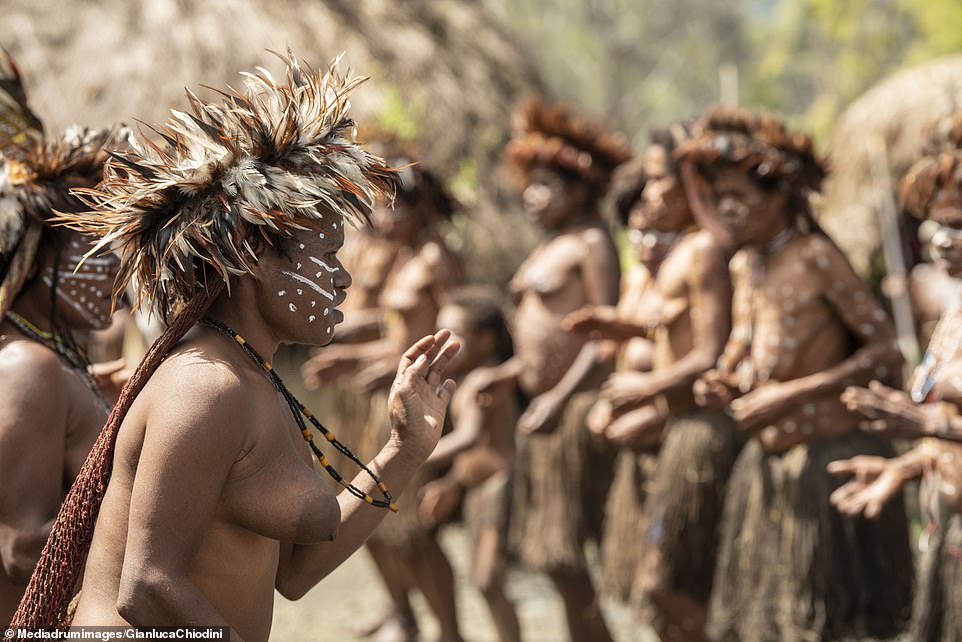
Women line up to do a tribal song and dance wearing face paint and feathers. Photographer, Gianluca Chiodini, described them as ‘the most beautiful tribe in the region by far’
After using various means of transport to reach the secluded Dani people, Mr Chiodini was greeted with ‘kindness’ and was stunned when he saw the mummified remains of a 250-year-old chief.
‘The Dani are the most beautiful tribe in the region by far. The men wear penis sheaths (Koteka) and wild boar tusks as rings through the nose with colourful face paints – you’re left in no doubt you’re looking at warriors,’ explained Mr Chiodini.
‘I studied mummification before I arrived but knew it would only be luck that allowed me to actually see one of the preserved corpses.
‘The Dani are said to keep seven mummies in total but only two can be seen by foreigners.’
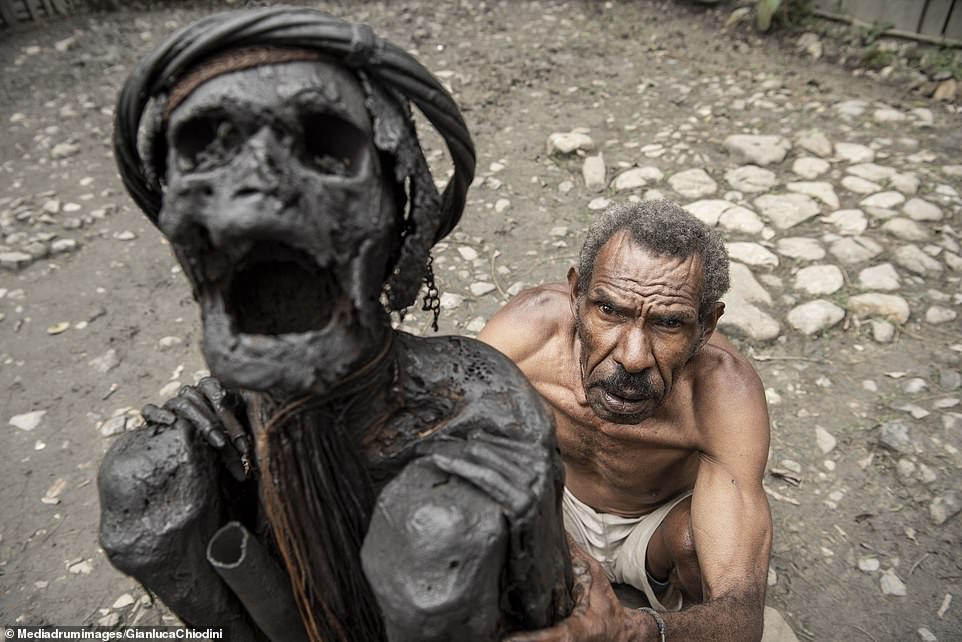
The mummified carcass of Wimontok Mabel, a Dani chief who lived 250 years ago and had 25 wives. The mummy is greased every day with a balm made with pork fat and a fire is lit that burns for up to six hours

A cultural meeting takes place between the women and children of the tribe as a fire smokes around them. During the feasts women are made to wait their turn
‘To preserve the body, it is greased every day with a balm made with pork fat and a fire is lit that burns for up to six hours. All this has been happening daily for 250 years.’
He continued: ‘The mummy is kept protected in a hut where access is strictly forbidden and only a select few are allowed to touch the dead.
‘The mummy I saw was a village chief and his name was Wimontok Mabel. He was a glorious warrior. He lived more than 250 years ago and had 25 wives. Peace to his soul.’
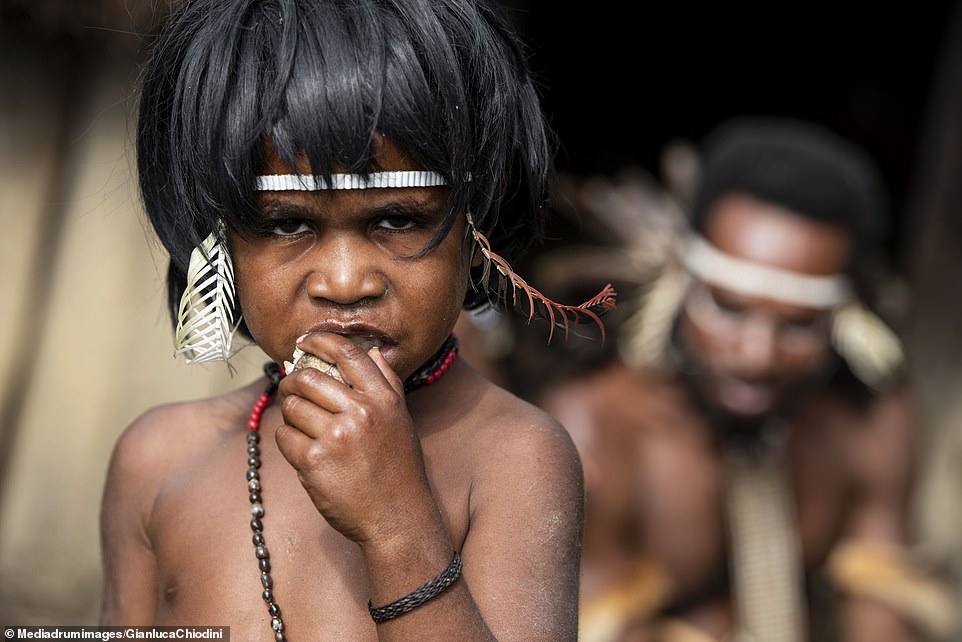
A young Dani member with beads, feathers and a leather bracelet eats while staring down the lens of the camera distrustfully

A Dani tribesman wearing a Koteka, commonly known as a penis sheath, while he makes salt. Photographer Gianluca Chiodini, 41, spent days finding the isolated mountain tribe
The Dani people were discovered by an American zoologist in 1938, which was the first time their existence was recorded by an outsider.
Zoologist Richard Archbold was on an expedition to New Guinea when he spotted the Dani people from a plane.
According to Mr Chiodini, there have been some major changes to the tribe in the past 80 years but some key traditions are still upheld.
‘The first contact by a Westerner was less than one century ago and the Dani were found living in Stone Age conditions, even practicing cannibalism according to some sources,’ Mr Chiodini said.
Peak inside the lives of the Dani tribe in Western New Guinea
A Dani tribesman wears an impressive array of feathers, fur and beads. He also has wild boar tusks linked through his nose
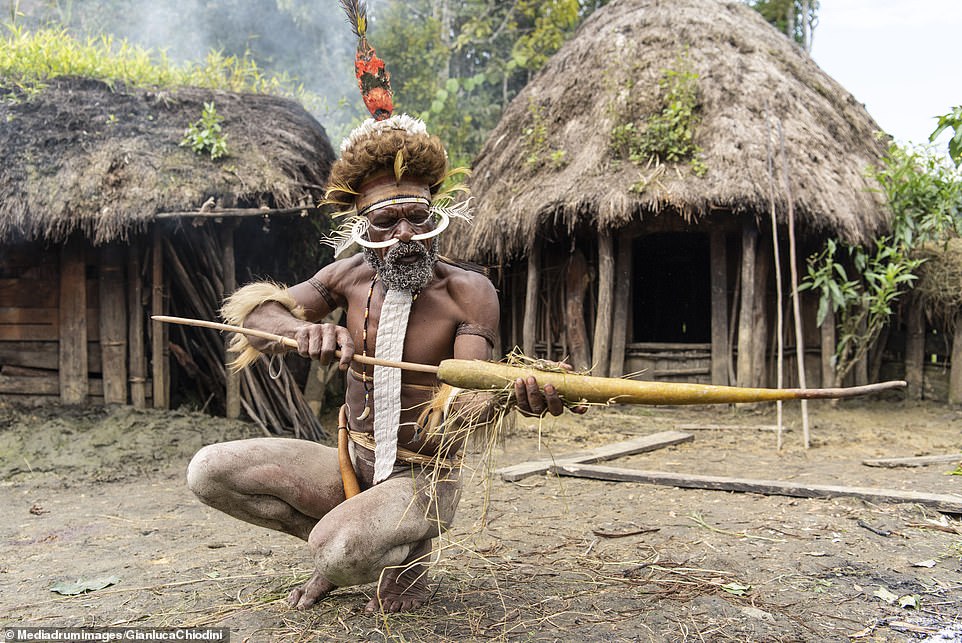
The tribesman creates a penis sheath from an elongated pumpkin. Over the past decades, Indonesian authorities have enforced laws causing the Dani to abandon their traditions and culture but even today some still wear Koteka
Dani tribe lines up face to face and are seen wearing wild boar tusks. The Dani people were discovered by an American zoologist in 1938, the first time their existence was recorded by an outsider
‘Over the past decades, Indonesian authorities have enforced laws causing the Dani to abandon their traditions and culture but even today some still wear ‘Koteka’. The village chief even explained me how to build a Koteka for me with an elongated pumpkin.
‘Cannibalism has been left in the past though, and now they prefer to have pig festivals. Men kill a pig with a bow and arrow while women prepare an open air ‘steam oven’ using leaves. In the end everyone eats the pig.’
He described how during the feast the women are made to wait their turn.
Mr Chiodini described seeing a woman with a ‘strange hand’ but on closer inspection realised fingers were missing.
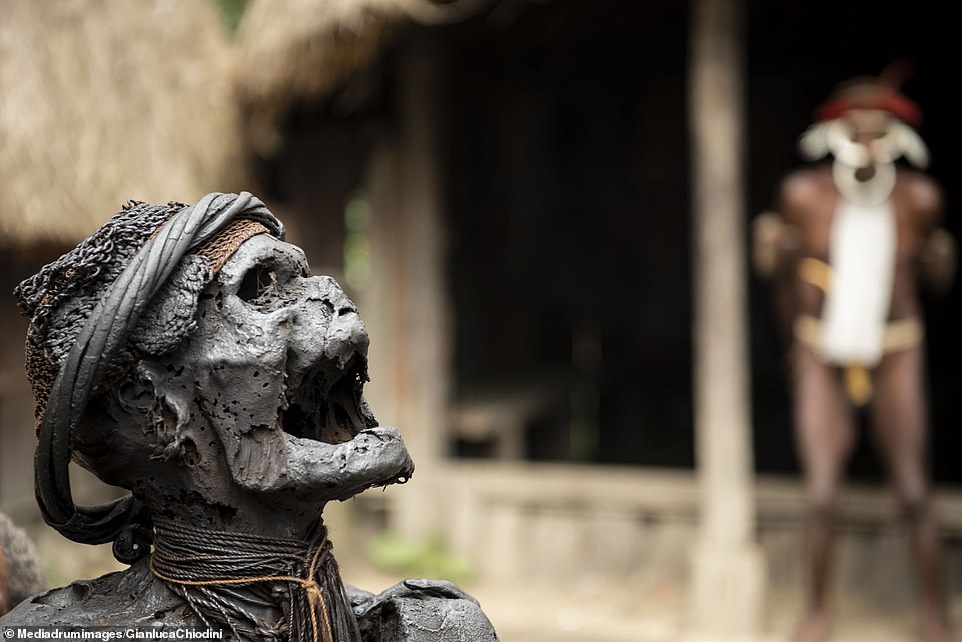
The 250-year-old chief is greased with a balm made from pork fat daily and a fire is like for up to six hours to preserve it. These rituals have happened daily for 250 years
He said: ‘They told me that tradition of the Dani states that when a close relative dies, the woman is made to have her fingers chopped with a stone axe to emphasise the pain of loss and to appease the dead’s spirit.
‘Today it is forbidden but you can still see the amputated hands of the older women.’
He added: ‘Despite their aggressive look and the isolation they live in, they are friendly. It can take a little while for them to trust outsiders which is why I decided to take some time and spend some days with them.
‘Slow photography’ is always a winning strategy and hopefully people can see that there is beauty everywhere.’
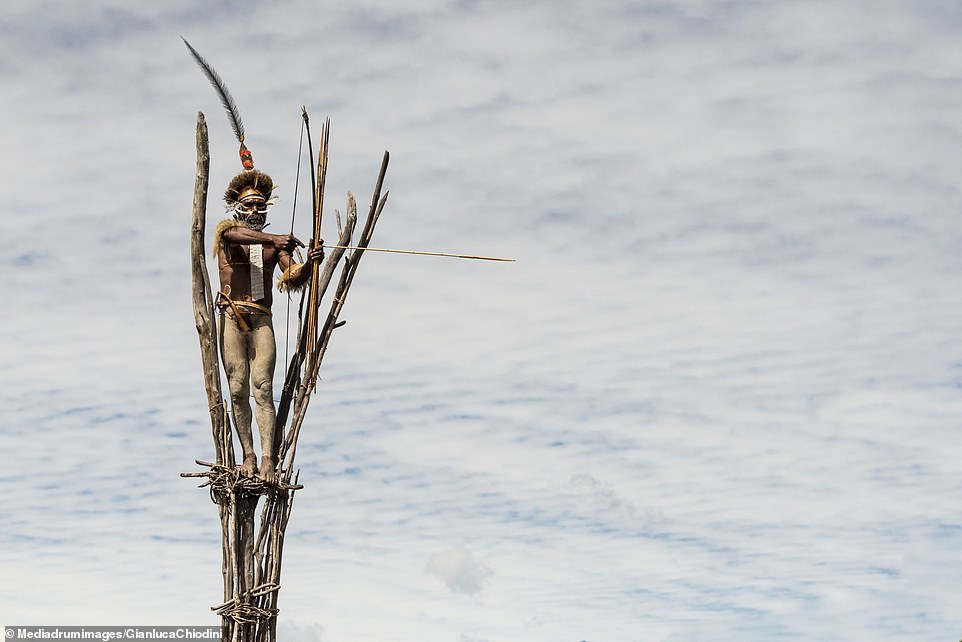
A Dani archer takes aim from his rudimentary platform and is seen wearing a large black feather from his head and a Koteka
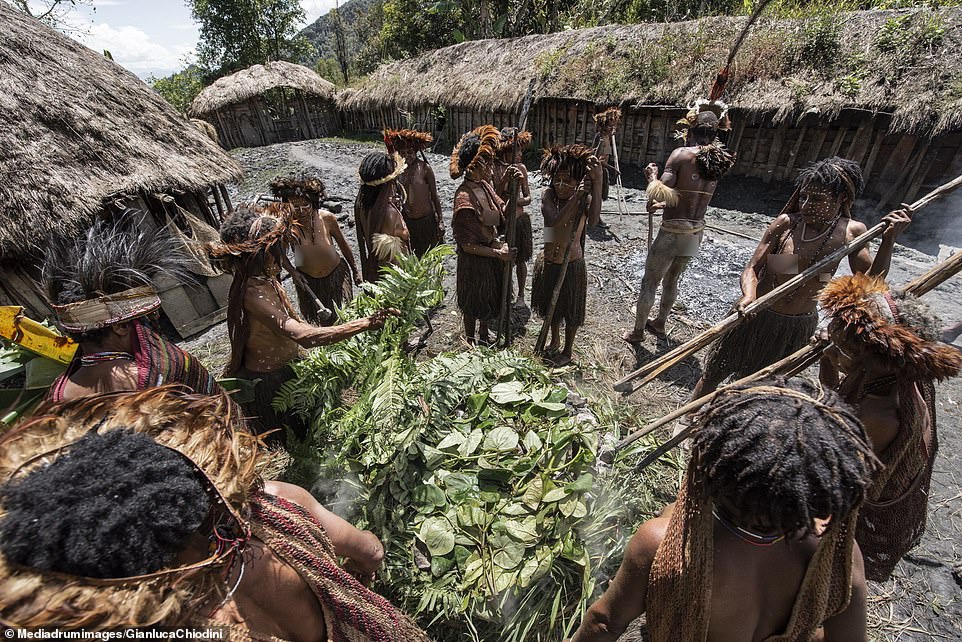
The group gathers as women prepare an open air ‘steam oven’ using leaves where all of the tribe come together to eat the pig





